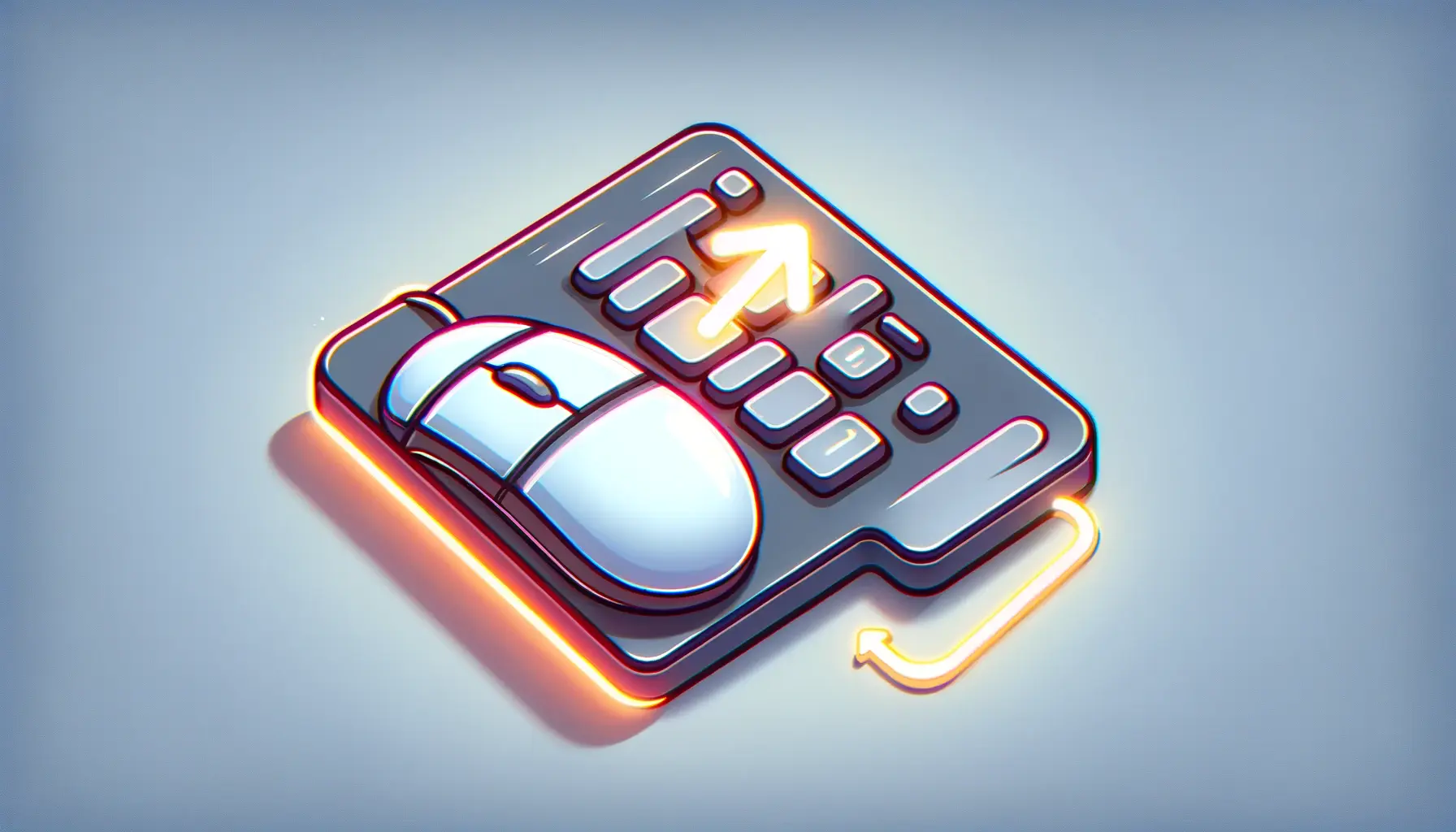In today’s digital age, ensuring that websites and applications are accessible to everyone, including those with disabilities, is not just a courtesy—it’s a necessity.
Among the myriad of CSS properties that contribute to making the web more inclusive, one stands out for its simplicity and effectiveness: the :focus-visible pseudo-class.
This powerful CSS feature is transforming the way developers approach keyboard navigation, making it easier for users to interact with web content without a mouse.
The :focus-visible pseudo-class is a CSS selector that enhances the accessibility of web elements by providing visual cues to indicate which element currently has keyboard focus.
Unlike the traditional :focus selector, which applies a focus style to elements anytime they are focused, :focus-visible is smarter.
It only applies focus styles when the element is focused via keyboard interactions, such as using the Tab key, thereby avoiding unnecessary focus indicators when using a mouse or touch input.
This distinction is crucial for creating a user-friendly interface that caters to both keyboard and mouse users without compromising on aesthetics or functionality.
- Understanding :focus-visible and Its Importance
- Implementing :focus-visible in Web Design
- Challenges and Solutions in Implementing :focus-visible
- Accessibility Beyond :focus-visible
- Testing and Validation for Accessibility
- Real-world Applications and Success Stories
- Future Trends in Web Accessibility
- Embracing :focus-visible for a More Accessible Future
- :focus-visible FAQs
Understanding :focus-visible and Its Importance
The introduction of :focus-visible in CSS is a significant leap forward in web accessibility.
It addresses a common challenge faced by web developers: how to make websites navigable and accessible for keyboard users without cluttering the interface with focus indicators for mouse users.
By targeting focus styles to only appear when elements are focused via the keyboard, :focus-visible ensures that users who rely on keyboard navigation can easily identify their location on a page.
This selective application of focus styles not only improves the user experience for keyboard users but also maintains the visual integrity of the website for mouse users.
It represents a thoughtful approach to design, acknowledging the diverse ways in which users interact with the web.
The :focus-visible pseudo-class empowers developers to create more accessible and inclusive digital environments, where all users, regardless of their mode of interaction, can enjoy a seamless and engaging experience.
Benefits for Keyboard Navigation
Keyboard navigation is essential for many users, particularly those with motor disabilities who may find using a mouse challenging.
The :focus-visible pseudo-class significantly enhances the keyboard navigation experience by clearly highlighting the active element on the screen.
This visual feedback is crucial for users to understand where they are on a page and to interact confidently with web content.
Moreover, :focus-visible improves the overall usability of websites by making keyboard navigation more intuitive and efficient.
Users can quickly move through links, buttons, and form elements using the Tab key, with each focused element visibly marked.
This not only aids users with disabilities but also benefits power users who prefer keyboard shortcuts for speed and efficiency.
The :focus-visible pseudo-class is a game-changer in web accessibility, offering a simple yet effective solution to enhance keyboard navigation without compromising the visual appeal of websites.
Implementing :focus-visible in Web Design
Integrating :focus-visible into web design is a straightforward process that can have a profound impact on the accessibility and usability of a website.
By following best practices for implementation, developers can ensure that their sites are navigable and inclusive for all users.
Here’s how to effectively incorporate :focus-visible into your web projects:
Best Practices for Using :focus-visible
Adopting :focus-visible in your CSS involves more than just adding the pseudo-class to your stylesheet.
To maximize its benefits, consider these best practices:
- Use alongside :focus: Employ :focus-visible in conjunction with the :focus pseudo-class to ensure that focus styles are applied in all necessary situations, enhancing accessibility for users who navigate both with keyboards and other input methods.
- Customize focus styles: Design custom focus indicators that are visually distinct and easily noticeable, yet harmonious with the overall design of your site. This can involve changing the outline color, style, or even implementing box shadows or background changes.
- Test across browsers: Since support for :focus-visible varies across browsers, it’s crucial to test your website in multiple environments to ensure consistent behavior and appearance of focus styles.
- Consider fallbacks: For browsers that do not yet support :focus-visible, consider using a polyfill or providing fallback styles using JavaScript or other CSS techniques to maintain accessibility.
By adhering to these practices, developers can create more accessible web experiences that cater to the needs of keyboard users without detracting from the visual design for mouse users.
Examples of :focus-visible in Action
Seeing :focus-visible in action can help illustrate its impact on web accessibility.
Consider a form with multiple input fields and buttons.
Without :focus-visible, keyboard users might struggle to determine which element is currently focused, leading to a frustrating experience.
With :focus-visible applied, each element that receives focus via the keyboard is clearly marked, guiding users through the form effortlessly.
Another example is a navigation menu with dropdown items.
Implementing :focus-visible ensures that keyboard users can visually track their progress through the menu, making it easier to access the desired section of the website.
These practical applications highlight how :focus-visible can transform the usability of web elements for keyboard users.
Incorporating :focus-visible into your web design is not just about adhering to accessibility standards; it’s about embracing a user-centric approach that values the diverse ways people interact with the web.
Challenges and Solutions in Implementing :focus-visible
While the benefits of :focus-visible are clear, its implementation can present challenges for web developers and designers.
These challenges often stem from browser compatibility issues, design considerations, and ensuring a seamless user experience for all.
However, with every challenge comes a solution, and understanding these can help in effectively utilizing :focus-visible in your projects.
Browser Compatibility Issues
One of the main hurdles in implementing :focus-visible is the varying levels of support across different browsers.
Not all browsers have adopted this pseudo-class, which can lead to inconsistent experiences for users depending on their choice of browser.
- Solution: Utilize a polyfill for :focus-visible to ensure compatibility across browsers. A polyfill is a piece of code (usually JavaScript) that provides the technology that you, the developer, expect the browser to provide natively. Leveraging a polyfill allows you to use :focus-visible even in browsers that do not support it yet.
Design Considerations
Another challenge involves integrating focus styles that are both effective and aesthetically pleasing.
Designers may worry that focus indicators could disrupt the visual harmony of a site.
- Solution: Design custom focus indicators that align with your site’s aesthetic while remaining visible and distinctive. This can involve experimenting with different styles, such as underlines, box shadows, or changing background colors, to find a solution that both enhances usability and complements the design.
Ensuring a Seamless User Experience
Ensuring that the implementation of :focus-visible enhances rather than detracts from the user experience can also be challenging.
It’s important that focus indicators are not too intrusive for mouse users while still being clear for keyboard users.
- Solution: Use CSS to apply :focus-visible selectively, ensuring that focus indicators are only shown when necessary. Additionally, consider using JavaScript to detect the user’s input method and adjust the focus styles accordingly. This approach allows for a dynamic application of focus styles that cater to the interaction method of the user.
Despite these challenges, the implementation of :focus-visible is crucial for creating accessible and inclusive web experiences.
By addressing these issues with thoughtful solutions, developers and designers can ensure that their websites are navigable and enjoyable for all users, regardless of how they interact with the digital world.
The key to overcoming the challenges of implementing :focus-visible lies in creativity, testing, and a commitment to accessibility. By embracing these solutions, you can enhance the usability and inclusivity of your web projects.
Accessibility Beyond :focus-visible
While the :focus-visible pseudo-class is a significant tool in the arsenal of web accessibility, it’s just one piece of the puzzle.
Ensuring that websites and applications are fully accessible requires a comprehensive approach that goes beyond focus indicators.
Here, we explore additional strategies and features that complement :focus-visible and contribute to creating an inclusive digital environment.
Inclusive Design Principles
Inclusive design is a methodology that considers the full range of human diversity with the goal of creating products that are accessible to as many people as possible.
This approach involves:
- Providing clear and concise content that is easy to understand.
- Ensuring that interactive elements are large enough to be easily clicked or tapped.
- Using color contrasts that meet or exceed the WCAG (Web Content Accessibility Guidelines) standards.
- Offering alternative text for images to support screen reader users.
These principles ensure that the design of web elements is considerate of users with various disabilities, including visual, auditory, motor, and cognitive impairments.
Advanced Accessibility Features
Beyond design considerations, there are advanced features and technologies that can enhance web accessibility:
- ARIA (Accessible Rich Internet Applications): A set of attributes that make web content more accessible by helping screen readers and other assistive technologies understand what is happening on the screen.
- Keyboard Accessibility Enhancements: Beyond :focus-visible, ensuring that all functionality can be accessed through the keyboard alone is crucial. This includes creating custom keyboard shortcuts for complex interactions.
- Screen Reader Optimization: Optimizing content for screen readers involves structuring HTML in a logical order, using semantic HTML5 elements, and ensuring dynamic content updates are announced properly.
Implementing these features requires a deep understanding of accessibility standards and a commitment to testing with real users and assistive technologies.
This ensures that the web remains an inclusive space for everyone.
Accessibility is a journey, not a destination. Continuously improving and updating accessibility features, including but not limited to :focus-visible, is essential for keeping up with evolving standards and technologies.
Testing and Validation for Accessibility
Ensuring that web projects meet accessibility standards is not just about implementing the right features; it’s also about rigorous testing and validation.
This process helps identify any potential barriers that users with disabilities might face.
Here, we delve into the methodologies and tools that can aid in evaluating the accessibility of your web content, ensuring that features like :focus-visible are effectively implemented.
Accessibility Testing Tools
There are numerous tools available that can automate the process of testing web accessibility.
These tools can scan your web pages and identify issues that may hinder accessibility, such as missing alt text, insufficient color contrast, and improper use of ARIA roles.
Some popular accessibility testing tools include:
- WAVE (Web Accessibility Evaluation Tool)
- AXE Accessibility Engine
- Lighthouse by Google
While these tools provide a solid foundation for accessibility testing, they cannot catch every issue.
Therefore, they should be used in conjunction with manual testing and user feedback.
Manual Testing and User Feedback
Manual testing involves navigating your website or application using only a keyboard or screen reader to mimic the experience of users with disabilities.
This hands-on approach can uncover issues that automated tools might miss, such as logical flow, readability, and the effectiveness of :focus-visible indicators.
Gathering feedback directly from users with disabilities is also invaluable.
User testing sessions can provide insights into real-world challenges and preferences that might not be apparent to developers and designers.
This feedback can guide further improvements and adjustments to ensure that your web content is truly accessible.
Together, automated tools, manual testing, and user feedback form a comprehensive testing strategy that can help ensure your web projects are accessible to everyone.
This multi-faceted approach is crucial for identifying and addressing accessibility issues, making the digital world more inclusive.
Remember, accessibility testing is an ongoing process. As web technologies and standards evolve, so too should your testing and validation efforts to ensure continuous compliance and usability for all users.
Real-world Applications and Success Stories
The implementation of :focus-visible and other accessibility features is not just theoretical; numerous organizations have seen tangible benefits from prioritizing web accessibility.
These real-world applications and success stories highlight the positive impact that thoughtful, inclusive design can have on users and businesses alike.
Enhancing User Engagement Through Accessibility
One notable example comes from a major e-commerce platform that implemented :focus-visible to improve keyboard navigation for its users.
By customizing focus indicators to match their brand aesthetic while ensuring high visibility, they significantly enhanced the shopping experience for users relying on keyboard navigation.
This led to an increase in user engagement and a decrease in bounce rates, demonstrating that accessibility improvements can have direct benefits for business metrics.
Another success story involves a public sector website that underwent a comprehensive accessibility overhaul.
By focusing on inclusive design principles, including the implementation of :focus-visible, the site saw a marked improvement in user satisfaction scores, particularly among users with disabilities.
The project not only improved the site’s compliance with legal accessibility standards but also served as a model for other government websites aiming to become more inclusive.
Accessibility as a Competitive Advantage
In the tech industry, a startup focused on educational software differentiated itself by prioritizing accessibility from the outset.
By incorporating :focus-visible and other accessibility best practices into their product design, they were able to reach a wider audience, including students with disabilities.
This focus on inclusivity not only fulfilled a moral obligation but also positioned the company as a leader in accessible educational technology, opening up new market opportunities.
These examples underscore the fact that investing in accessibility is not just the right thing to do from an ethical standpoint; it can also drive business success.
By making web content more accessible, organizations can expand their reach, improve user satisfaction, and foster a more inclusive digital world.
Accessibility should be viewed as an integral part of the design process, not an afterthought. Success stories from across the web demonstrate that when accessibility is prioritized, everyone benefits.
Future Trends in Web Accessibility
The landscape of web accessibility is continually evolving, with new standards, technologies, and best practices emerging to meet the needs of a diverse user base.
As we look to the future, several trends are set to shape the way developers and designers approach accessibility, ensuring that the web remains an inclusive space for everyone.
Advancements in Assistive Technologies
Assistive technologies, such as screen readers and voice recognition software, are becoming more sophisticated, offering users with disabilities enhanced ways to interact with digital content.
Future developments in this area are expected to include:
- Improved AI-driven context understanding, enabling assistive technologies to provide more accurate and relevant information to users.
- Greater integration with mainstream technologies, allowing for a seamless user experience across devices and platforms.
Increased Focus on Inclusive Design
Inclusive design is gaining recognition as a fundamental aspect of the development process, rather than an optional add-on.
This shift is likely to result in:
- More comprehensive training for developers and designers on accessibility principles and techniques.
- Greater involvement of users with disabilities in the design and testing phases of web projects.
Regulatory Changes and Global Standards
As awareness of the importance of accessibility grows, so too does the regulatory landscape.
Future trends in this area may include:
- The introduction of stricter accessibility regulations across various industries and countries.
- Harmonization of global accessibility standards, making it easier for organizations to comply and for users to benefit from consistent experiences.
These trends highlight the ongoing commitment to making the web more accessible for all users.
By staying informed and adapting to these changes, developers and designers can continue to create digital experiences that are not only compliant with accessibility standards but also genuinely inclusive and user-friendly.
The future of web accessibility is bright, with advancements in technology, design, and regulation all contributing to a more inclusive digital world. By embracing these trends, we can ensure that the web remains accessible to everyone, regardless of their abilities or circumstances.
Embracing :focus-visible for a More Accessible Future
The journey through understanding and implementing the :focus-visible pseudo-class in web design underscores a broader commitment to accessibility and inclusivity on the web.
As we’ve explored, :focus-visible is not just a tool for enhancing keyboard navigation; it’s a stepping stone towards creating digital spaces that everyone can access and enjoy, regardless of their physical abilities.
The power of :focus-visible lies in its ability to make web interactions more intuitive for keyboard users without compromising the aesthetic integrity of web designs for mouse users.
The Path Forward with :focus-visible
Looking ahead, the role of :focus-visible in web accessibility is set to become even more significant.
As developers and designers continue to push the boundaries of what’s possible on the web, the principles of accessible design must remain at the forefront of their efforts.
The future trends in web accessibility, including advancements in assistive technologies, a greater focus on inclusive design, and evolving regulatory standards, all point towards a digital landscape where accessibility is not an afterthought but a foundational element of web development.
- Continued innovation in assistive technologies will enhance the web experience for users with disabilities.
- Inclusive design practices will become standard procedure in the development process, ensuring that web projects are accessible from the ground up.
- Global standards and regulations will drive the adoption of accessibility features, including :focus-visible, across industries and borders.
As we embrace these changes, the :focus-visible pseudo-class will play a crucial role in ensuring that web content is accessible and navigable for keyboard users.
By prioritizing features like :focus-visible, the web development community can contribute to a more inclusive digital world where everyone has equal access to information, services, and opportunities online.
Conclusion
In conclusion, the power of :focus-visible for better accessibility cannot be overstated.
It represents a critical step towards dismantling the barriers that prevent users with disabilities from fully participating in the digital age.
As we continue to evolve and innovate in web design and development, let us carry forward the lessons learned from implementing :focus-visible.
By doing so, we can ensure that the web remains a space that is open, accessible, and welcoming to all, today and in the future.
Quality web design is key for a great website! Check out our service page to partner with an expert web design agency.
:focus-visible FAQs
Explore common questions about :focus-visible to enhance your understanding and implementation of this crucial CSS feature for better web accessibility.
:focus-visible is a CSS pseudo-class that applies focus styles to elements when they are focused via keyboard, improving accessibility without cluttering the UI.
Unlike :focus, which applies to all focus events, :focus-visible targets only keyboard-initiated focus, reducing visual noise for mouse users.
:focus-visible enhances web accessibility by providing clear visual cues for keyboard navigation, aiding users with disabilities.
Yes, developers can customize :focus-visible styles to match their site’s design while maintaining clear focus indicators for accessibility.
Support for :focus-visible is growing, but not all browsers fully support it yet. Using a polyfill can ensure compatibility across browsers.
Testing involves manual keyboard navigation and automated accessibility tools to ensure :focus-visible is correctly applied and visible.
Best practices include using :focus-visible alongside :focus, customizing focus styles, and ensuring fallbacks for unsupported browsers.
By providing clear focus indicators for keyboard users, :focus-visible improves navigation and interaction, enhancing the overall user experience.












